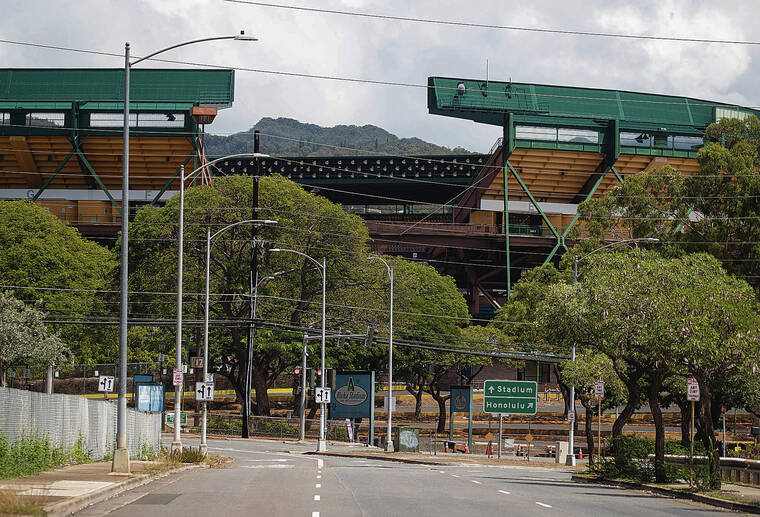The Stadium Authority board learned at its monthly meeting Thursday that it is on firm legal ground with the private-public partnership it has been working on for several years to build a New Aloha Stadium Entertainment District.
But it might not matter — at least until there’s a new governor in less than three months. That’s because Gov. David Ige and Business, Economic Development and Tourism Director Mike McCartney, who put a hold on the project this month, control access to the $400 million allocated by the Legislature last session to build a stadium.
After McCartney told the board that the way the funding for the new stadium was written disallows private-public partnerships, board member Michael Yadao asked the state Department of the Attorney General just how much authority the Stadium Authority actually has when it comes to building the new stadium.
“Policy comes from the Stadium Authority,” Deputy State Attorney General Randall Nishiyama said. “The Department of Accounting and General Services can continue to work on the project (as a Stadium Authority client).”
The project that the Stadium Authority and DAGS have been working on was thrown into disarray two weeks ago when Ige’s chief of staff told state Comptroller Curt Otaguro to stop work on requests for proposals for NASED.
McCartney told the authority board Thursday that the governor’s plan is to “keep it simple” and prioritize building the stadium.
A key feature of the private-public partnership concept is that private partners would pay for the annual maintenance of the stadium for the 30-year lease of the public land.
“There’s no experience in this state to oversee it and manage it,” McCartney said.
Thursday’s Stadium Authority meeting was the first since Ige, whose second and final term as governor ends in December, put the brakes on the NASED plan.
McCartney, who is also a member of the authority board, said the governor’s plan is to build the stadium first and the entertainment district later.
“Other things will fall into place as time goes on, things like sewer lines, roads. The governor would like to meet with the board before any decision is made,” he said.
McCartney and Ige have said details of a plan to expedite building the stadium would be unveiled in October. The DBEDT director offered no specifics of their plan Thursday, except to say that various community entities could be assigned to take charge of the work.
State Sen. Glenn Wakai, one of NASED’s biggest proponents, said “there is no plan other than building a stone wall to stop this.”
McCartney apologized for not communicating more directly and clearly with DAGS and the Stadium Authority about the governor’s new direction for stadium development.
The latest estimate was that the stadium would be ready for use in 2027, and proponents say further delays will severely cut into the quality of the final product because of rising costs.
DAGS Public Works Administrator Chris Kinimaka has said repeatedly that the approved infrastructure plans for a stand-alone stadium and the much larger NASED project are not interchangeable. They are outlined in an environmental impact statement approved by Ige last week.
DAGS has spent around $25 million in preparation work for NASED.
“I just ask everyone to be patient,” McCartney said. “Now we just have to seize the moment and prioritize the stadium.”

